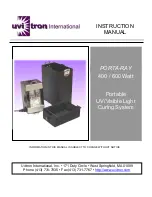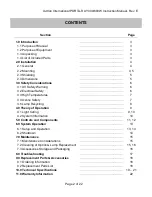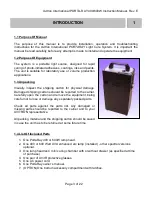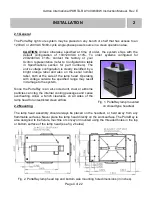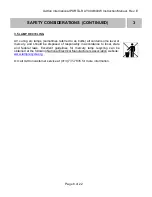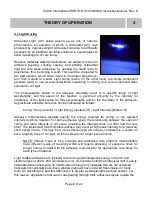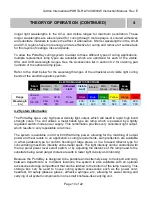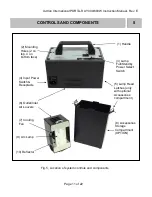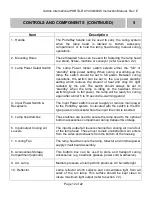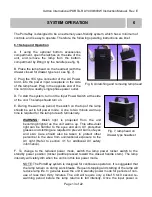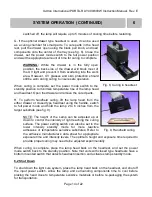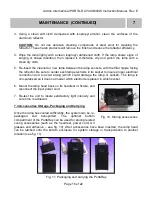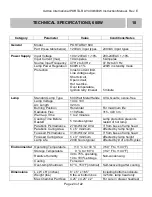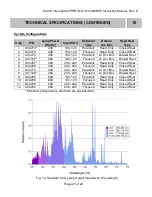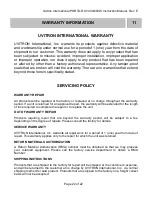
Uvitron International PORTA-RAY 400/600W Instruction Manual, Rev. E
Page 7 of 22
SAFETY CONSIDERATIONS (CONTINUED)
3
3.3 High Temperatures
Due to the high output power of this system, high temperatures may be
present on the surfaces of the lamp, reflector, lamp head and headrest.
Extreme care should be taken to prevent touching any of these surfaces
before allowing sufficient time for all temperatures to drop to safely back to
room temperature after power has been removed.
Also, the lamp head assembly should
never be placed on or near any flammable surface while the lamp is on, or before its
temperature has cooled back to room temperature. Never place the lamp head or parts to be
cured on a heat sensitive surface. Always cure parts on a metallic or non-flammable surface.
When the unit is not in use (or idling), place the lamp head on the headrest, and switch the
top mounted power level switch to the low power standby position to minimize temperature
rise.
WARNING:
Placing the Lamp Housing Assembly on or near flammable surfaces while the
lamp is on, or still hot could result in fire.
3.4 Ozone Safety
High concentrations of ozone (O3) can cause discomfort, or at sufficiently
high levels can be dangerous. Arc lamps that are used in light curing
systems may generate ozone when oxygen in the air is exposed to short
wavelengths of light produced by the lamp (<210 nm). This ozone generation
can be avoided by using arc lamps that are constructed with ozone-free
quartz glass, which absorbs the ozone producing wavelengths. This type of
glass is used in Uvitron’s UVA and visible type lamps. Unfortunately, this ozone-free glass
also can reduce the effectiveness of some curing processes that may require the absorbed
short wavelengths (e.g. those for some inks and coatings). For this reason, Uvitron’s UVB
type lamps are not constructed with ozone-free glass, and should be used only in well
ventilated work areas. Another way to cope with the ozone is to exhaust the lamp air
outdoors. Such exhausting involves no danger as the hot ozone containing gas is very
unstable and breaks down to oxygen rapidly in ducting.
Although some PortaRay system configurations generate ozone at a level that could barely
be detected by odor and at a level well below the 0.1 parts per million allowable limit for
continuous exposure (American Conference of Government Hygienists), it is recommended
that all PortaRay lamp systems be operated in well ventilated areas. For U.S. government
recommended ozone exposure limits and additional ozone safety information, visit the
following OSHA web page:
https://www.osha.gov/dts/chemicalsampling/data/CH_259300.html

